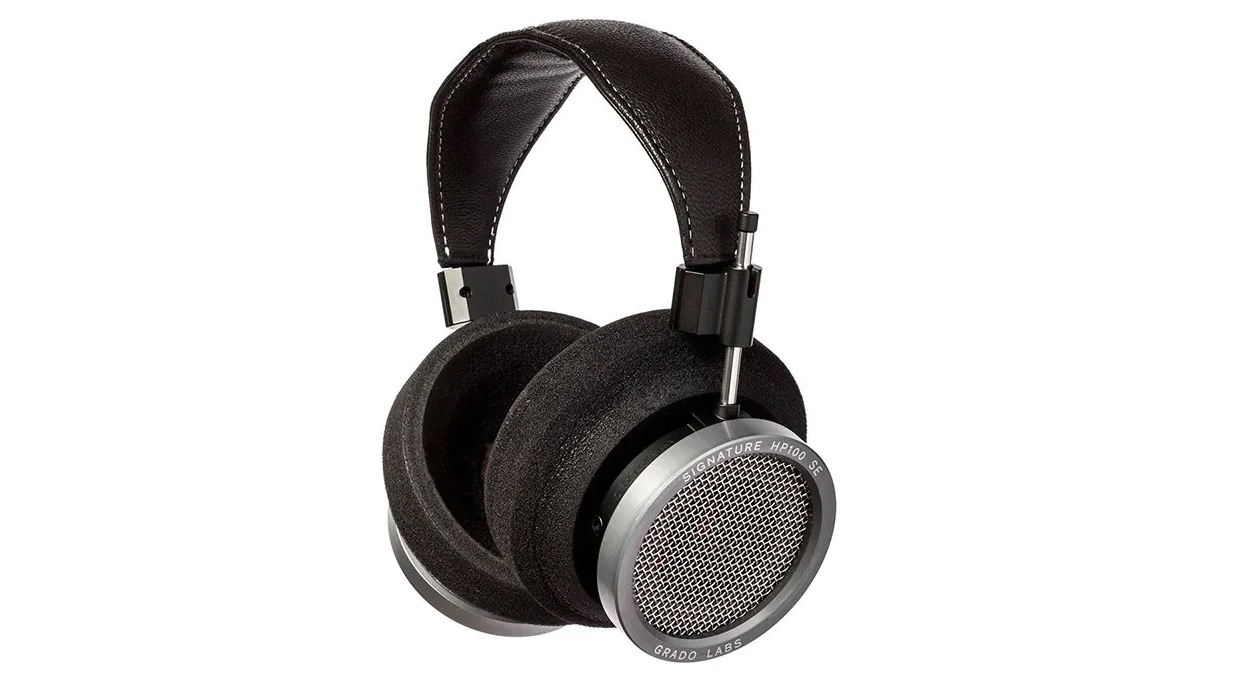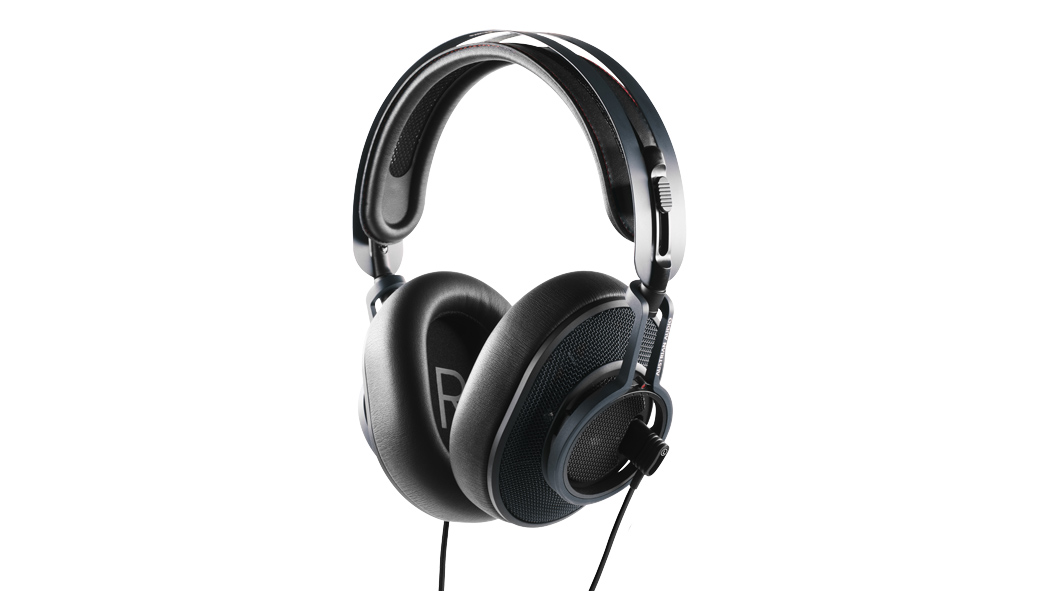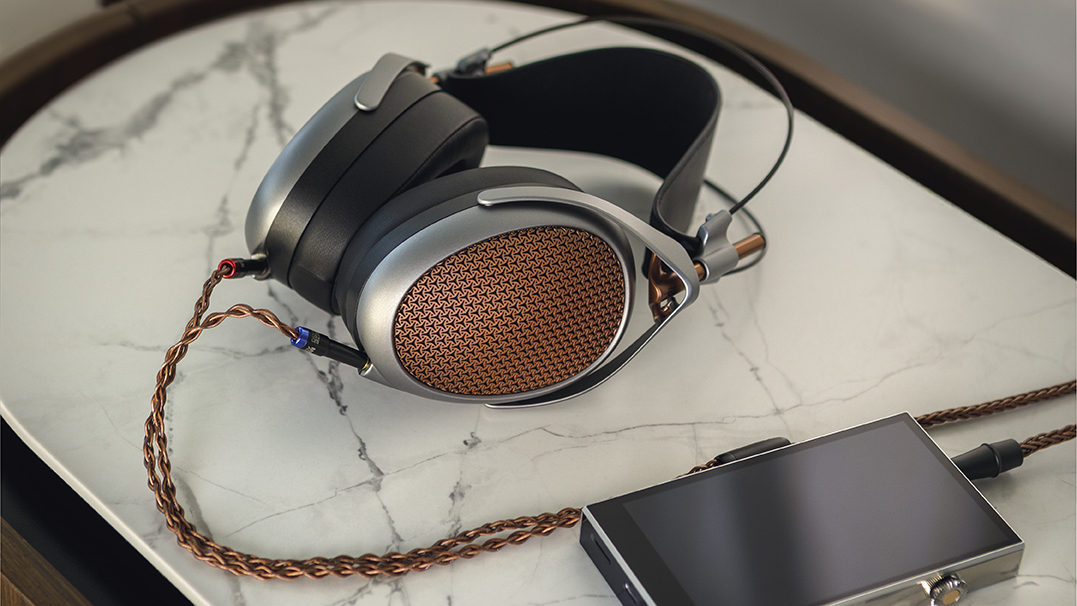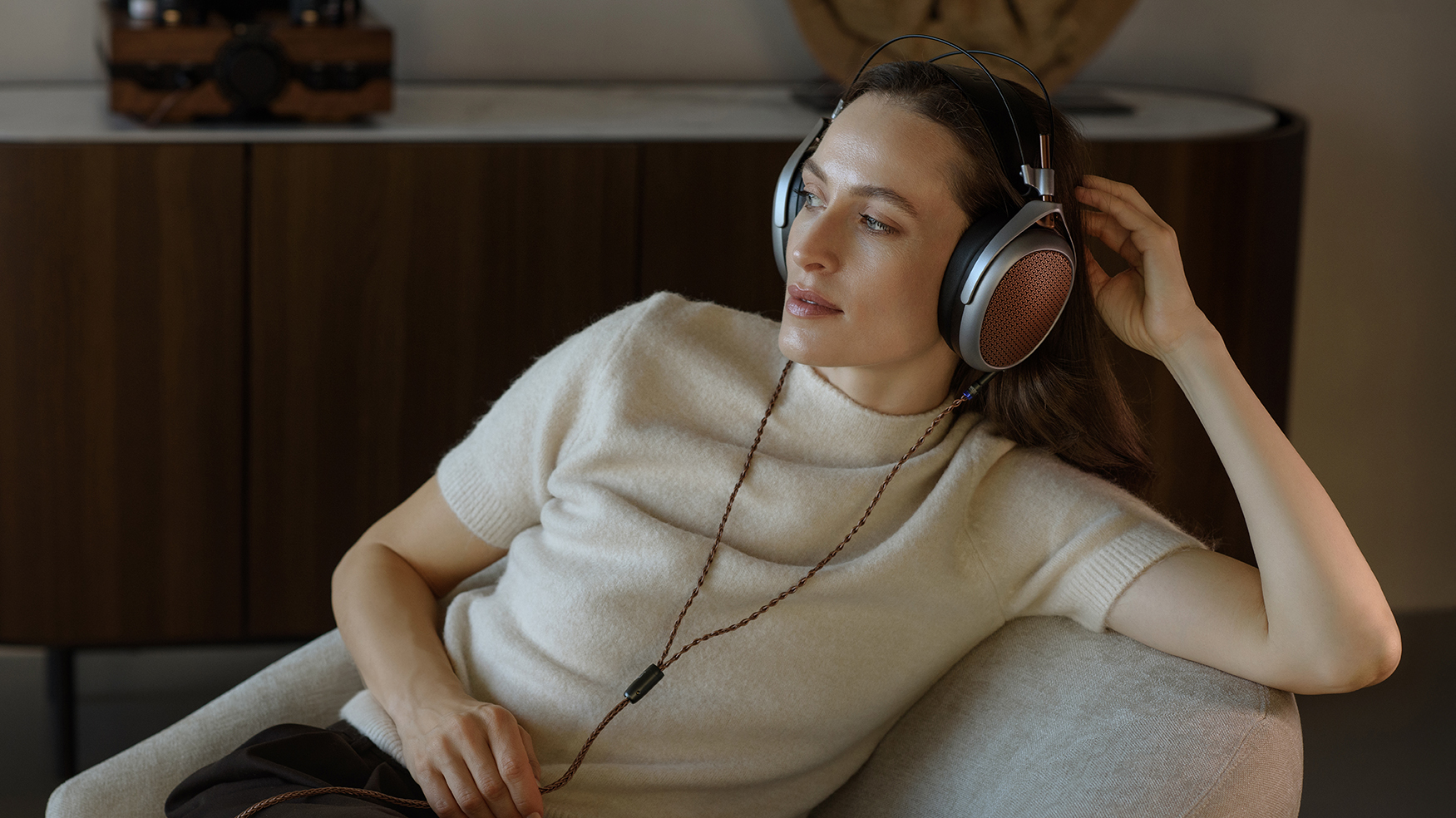I test headphones for a living – These are the 3 best luxury wired headphones you can buy
It’s Luxury Month on T3, so here are the 3 best luxurious pairs of headphones for a stellar listening experience



I’ve been an audio technology tester, reviewer and journalist for over 20 years now (time flies when you’re enjoying yourself). In that time I’ve seen the market for headphones expand massively – and in all directions.
There isn’t a week that goes by that I don’t listen to a new pair in order to understand and assess these new products, to let readers know if such headphones are worth their while or not. All in the interests of finding the best headphones money can buy.
And it doesn’t seem to matter the sort of headphones you’re interested in buying, your choice gets wider by the day. In-ear, on-ear or over-ear? Wired or wireless? Incredibly cheap, extraordinarily expensive or somewhere in between? You’ve so many to pick from that it’s sometimes difficult to know where to start.
But because it’s Luxury Month, this particular feature is focused solely on the best ‘really quite pricey’ wired-only designs that I’ve listened to. I’ve selected three pairs, and while they’re quite different in many ways (as I shall explain), they have a few things in common too – not least their ability to sound absolutely stunning.
So if luxury is a must, these wired options are must-haves. Just remember that you'll also need top-quality audio devices with wired terminals – such as an Activo P1 high-res player – for these wired headphones to truly deliver.
The 3 Best Headphones

It’s over 70 years since Joseph Grado established Grado Labs from his kitchen table in Brooklyn, New York. He started out with phono cartridges for turntables, but soon expanded into headphones. The company has since become a byword for sound quality and a very particular aesthetic – and it can be argued that the whole idea of ‘luxe headphones’ originated with 1989’s HP1. The Signature HP100 SE are a direct nod to that model, and also celebrate what would have been Joseph’s 100th birthday – so if it’s legacy you’re after, as well as a superb pair of headphones, you’ve come to the right place.

Austrian Audio started in 2017 – but given that the company was founded by a group of ex-AKG employees with over 350 year’s-worth of experience between them, it’s no huge surprise that the brand has taken next-to no time to establish itself as a genuine contender. The Composer are its first foray into the world of high-end, luxe headphones – and somewhat predictably, Austrian Audio has knocked it out of the park. In every respect – build quality, perceived value, sonic performance, you name it – they’re among the very best pound-for-pound wired headphones around.

Romania’s Meze Audio doesn’t do things by halves – and for its Poet over-ear headphones it’s pushed the boat so far out it’s almost impossible to see. Planar magnetic drivers designed by Ukraine audio savant Rinaro Isodynamics, and a list of materials that includes (but is not limited to) leather, titanium, magnesium and copper, lets you know the company isn’t messing about. By carefully combining these elements, Meze Audio has delivered a remarkably individualistic pair of high-end, high-achieving headphones. ‘Unusual’ is not a word that applies to headphone design all that often, but it’s definitely appropriate here.
Grado v Meze Audio v Austrian Audio: Pricing
When a product is as purely functional as a pair of headphones, it’s sometimes difficult to show just cause for a hefty price tag – so all three of the models will need to go to considerable lengths in order to justify the money they cost.
Austrian Audio is asking £2249 for a pair of The Composer. As well as the headphones themselves, that money buys you a large, padded wooden box in which they arrive, and a selection of cables. As well as a 3m length with a bog-standard 3.5mm jack (and 6.3mm adapter), there’s a 3m length with a four-pin XLR connector and a 1.3m cable that finishes in a 4.4mm Pentacon connector. Which should be sufficient to cover you in every eventuality.
Get all the latest news, reviews, deals and buying guides on gorgeous tech, home and active products from the T3 experts
Things are not quite so comprehensive where the Meze Audio Poet are concerned. £1899 buys you a pair of beautifully made headphones, naturally, and it also buys you a high-strength ABS box for transporting them that’s so large Meze Audio refers to it as a ‘suitcase’. It only buys you one cable, mind you – and although it’s a 2.5m braided length of Furukawa PCUHD copper, it’s terminated in a 6.3mm unbalanced jack. This is probably not what you think of when you think ‘premium headphones’, and it behooves Meze Audio to have a think about offering additional cables pronto.
Grado goes down the same route as Meze Audio where cables are concerned – and when you’re talking about an asking price of £2795 per pair it’s even less forgivable. Yes, the 1.8m braided cable is softer and more flexible than in previous Grado models and, yes, it’s now detachable from the earcups rather than captive – but it too features an uninspiring 6.3mm unbalanced termination that preclude use with more capable and upmarket audio sources. Now that Grado has decided detachable cables are a good idea, ‘a choice of cables’ is the next bright idea it needs to have. And while I’m at it, raw foam earpads may be an established Grado design feature – but there’s nothing especially ‘luxe’ about them.
Grado v Meze Audio v Austrian Audio: What's unique?

Each one of these headphones is pretty special, to be honest – but each is special in its own way, and they are quite distinct from each other.
Austrian Audio The Composer
The Austrian Audio have a two-tier headband – a mesh-and-pleather section rests on your head and a slender aluminium outer tier keeps the headphones in position.
The yokes are aluminium too, and they articulate sufficiently for the earcups to fold flat – the earcups themselves can be titled through four different positions. Between this arrangement and some nicely judged clamping force, The Composer is easy to get comfortable inside.
Such a design allows the 49mm full-range dynamic drivers to be ideally positioned over your ears – the diaphragm of each driver is coated in DLC (diamond-like carbon) for a combination of stiffness, lightness and responsiveness, and the resulting frequency response is (according to Austrian Audio) 5Hz - 44kHz.
Grado Signature HP100 SE
Grado has decided to add 50% more padding to its slender headband arrangement than previously – which sounds like a good thing, and it is. Don’t confuse this with any notion that the headband here is in any way generously padded, though, because it’s not.
Still, comfort is pretty good here, and it’s easy to position the earcups to your satisfaction – although the long-established Grado ‘friction pole’ method isn’t especially luxurious either.
But the important thing is getting the two newly imagined 52mm paper composite drivers in position – because when they are, the fresh design (which features a rare-earth alloy high-flux magnetic circuit and copper-plated aluminium voice coil) is ready to offer optimal dynamic and transient response from 3Hz up to 51kHz.
Meze Audio Poet
With the Poet, Meze Audio has followed its own established path. A very broad, very slender suede leather ‘headrest’ that’s the contact point is positioned beneath a headband made up of two very fine lengths of titanium alloy.
Hinges and yokes of magnesium offer a fair amount of articulation in the steel-backed earcups, and memory foam earpads help with the comfort quotient. As with Grado, though, a ‘friction pole’ adjustment mechanism strikes a faintly agricultural note.
Still, there’s nothing agricultural about the planar magnetic driver inside each earcup – a relatively compact 92 x 63mm, it has an active area of 3507mm², yet weighs just 0.06g.
The upper part has a ‘switchback’ coil to sort out low frequencies, and below there a spiral coil fires directly at your ear and takes care of midrange and high frequencies – it needs to be positioned there in order to deal with issues that might arise when sound wavelengths are shorter than the width of the earpad. The upshot is a frequency response of 4Hz - 96kHz.
Grado v Meze Audio v Austrian Audio: Which sounds best?

When discussing sound, ‘best’ is a very subjective idea – we all have our preferences and our trigger-points where sound is concerned. So it might be safest to say that each of these pairs of headphones sounds spectacular in their own way, and you’ll need to hear all three to decide what constitutes your own personal ‘best’.
Austrian Audio The Composer
The Austrian Audio, for instance, are a direct, assertive and, above all, a musical listen that are ready to take you straight to the heart of a recording in order to show you around.
Their frequency response is brilliantly even and balanced from top to bottom. Their tonality, no matter the sort of music you’re listening to, is neutral and naturalistic. And they seem more than capable of peering deep into the busiest, most complex mix and returning with an absolute stack of information regarding even the most transient details. ‘Complete’ seems an appropriate word to describe The Composer.
Grado Signature HP100 SE
The Grado Signature HP100 SE, meanwhile, might sound almost forensic on first acquaintance – after all, how else might you describe the ability to identify, reveal and contextualise every scrap of information in a recording?
But listen just a little longer and it becomes apparent these headphones are, in fact, a whole lot of fun – they’re a vibrant, entertaining listen with the sort of unarguable low-frequency control that makes their ability to convincingly express rhythms second to none. And where dynamics are concerned, both the ‘quiet/loud’ shifts and the more minor harmonic variations apparent in many recordings, the Grado absolutely pounce on them.
Meze Audio Poet
It’s soundstaging, and the scale and organisation and control of it, that’s most immediately striking about the Meze Audio Poet. The ability to offer every element of recording the elbow-room it needs in order to properly express itself is far from their only talent, though – these are impressive headphones in pretty much every respect.
For instance, they sound very unwilling to stick their oar into the sound of your music – what comes in is what comes out, with perhaps just a suggestion of the sound of your source player. And when it comes to midrange resolution, the Poet are among the best around – they reveal all the character and attitude in a voice as if it’s the easiest thing in the world.
Grado v Meze Audio v Austrian Audio: Which wins?

If I’m spending my own money, then I’m going to spend it on the Austrian Audio The Composer. Even in company as exalted as this, they demonstrate what I believe is sometimes called an ‘all-court game’.
If The Composer has a weakness when it comes to producing music, I’ve yet to discover it. It doesn’t matter if I want to closely examine every aspect of a recording or just be swept along in the emotion of it, I know the Austrian Audio have me covered.
It wouldn’t be the end of the world if I ended up with one of these other two pairs, mind you. The Grado are as accomplished as it gets when it comes to low-frequency authority and expression, and they have a vigorous musicality about their sound that I can’t ever imagine getting tired of.
And it seems equally unlikely the Meze Audio’s ability to reveal all the secrets of a vocalist’s technique, their emotional state and their overall intentions would ever get old. Which only further confirms the magic of this pair as much as the other two.
Honorable mentions
Expensive and luxurious headphones are hardly thin on the ground, and while the three pairs I’ve discussed here are among the very best around, there are alternatives that are more than worthy of a mention.
The Focal Stellia, for example, are a slightly less antisocial proposition than the three open-backed pairs of headphones discussed above – their closed-back configuration means they don’t leak sound out anything like as readily. They’re beautifully made, quite interesting to look at and, even though they’re relatively long in the tooth, they’re still fully competitive.
Or you could just throw caution to the wind, double your budget over the priciest headphones I’ve mentioned so far, and check out Yamaha’s superlative YH-5000SE. Their exceptional powers of resolution and detail retrieval, their absolutely vaulting dynamic ability and their peerless description of rhythms and tempos will bring a lump to your throat almost as quickly as the bill for £4799 will.
Simon Lucas is a freelance technology journalist and consultant, with particular emphasis on the audio/video aspects of home entertainment. Before embracing the carefree life of the freelancer, he was editor of What Hi-Fi? magazine and website – since then, he's written for titles such as Wired, Metro, the Guardian and Stuff, among many others. Should he find himself with a spare moment, Simon likes nothing more than publishing and then quickly deleting tweets about the state of the nation (in general), the state of Aston Villa (in particular) and the state of his partner's cat.
You must confirm your public display name before commenting
Please logout and then login again, you will then be prompted to enter your display name.
